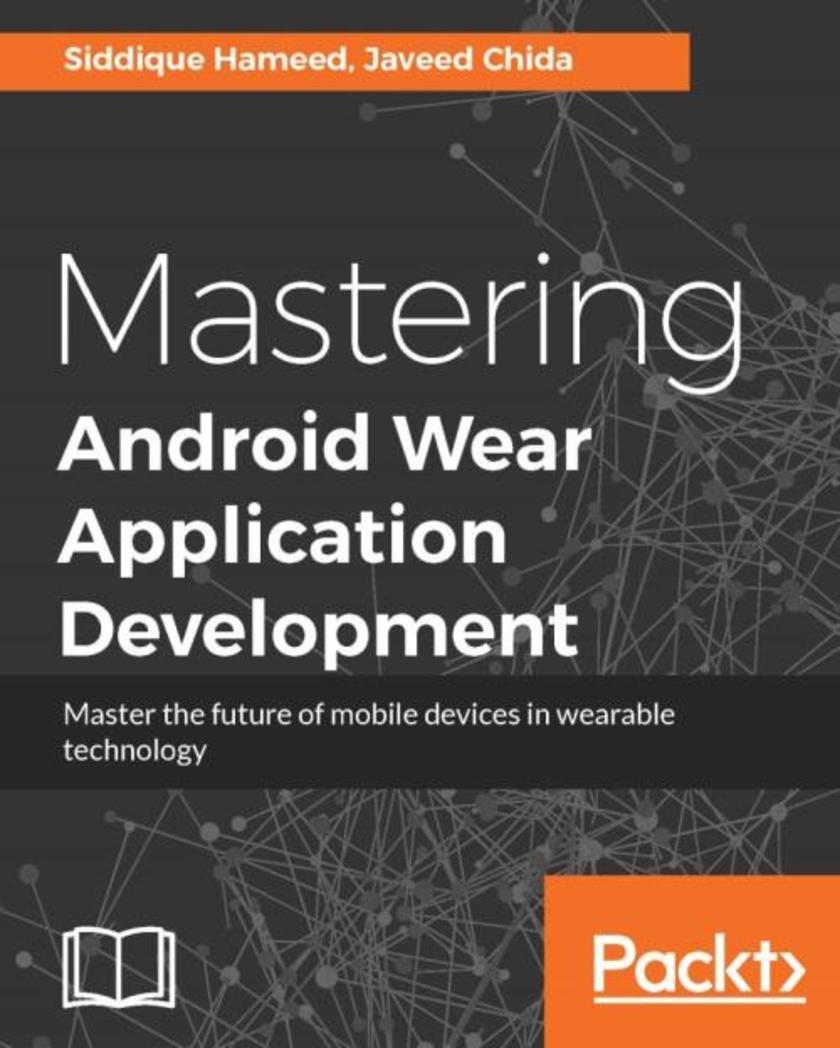
Mastering Android Wear Application Development
¥71.93
Master the future of mobile devices in wearable technology About This Book Mastering Android Wear Development is a complete guide to wearable technology for experienced Android developers Notifications, voice input, coping with round screens – all the key challenges of wearable technology are covered This book describes not just how to write code for wearables, but also how to think about wearable technology and design apps that work well with the physical limitations of wearable devices Who This Book Is For This book is for application developers (the web, mobile, and desktop) who are interested in building new wearable apps, and mobile developers who already have apps on iTunes or Google Play Store and are looking to provide Android Wear support for their existing Android or iOS apps. What You Will Learn Understand the Wearable computing technology Set up a development environment to build Android Wear apps using Android Studio Master the Android Wear SDK and APIs Understand the UI patterns and UX principles to build Android Wear apps Work with the different form factors of wearable devices (round and square) Take advantage of the sensors available on Android Wear devices Develop Android Wear sample apps Communicate between Android mobile and Android Wear apps Get to know the steps involved in publishing Android Wear apps to the Play store In Detail Wearable technology is the future of mobile devices. It looks set to be a breakthrough technology, just like the iPad was before it. With the Apple Watch being widely regarded as a success, all eyes are now on Google to provide a similar device for its users. Keep your skills ahead of the competition and be one of the first to fully understand this powerful new trend. This book will give you a very solid understanding of the philosophy, thought process, development details, and methodologies involved in building well-designed, robust Android Wear applications. We cover the advantages and disadvantages of the wearable computing paradigm and provide a good foundational knowledge for you to build practical, real-world wearable apps. You will learn about the various tools, platforms, libraries, SDKs, and technology needed to build Android Wear apps. By the end of the book, you will be an expert in building Android wearable apps. Style and approach This one-stop professional tutorial will teach you everything you need to know to begin designing and developing applications for this exciting new technology. Every step from development through testing to deployment is explained in depth.
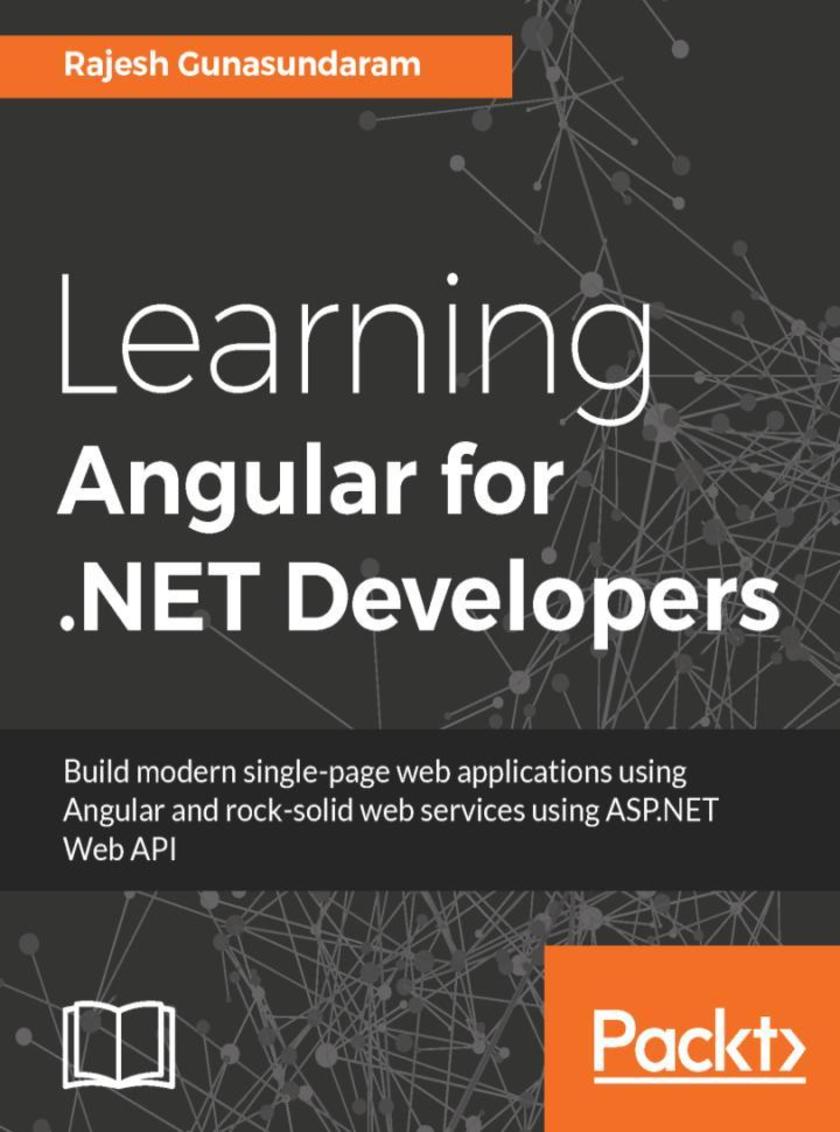
Learning Angular for .NET Developers
¥71.93
Build efficient web apps and deliver great results by integrating Angular and the .NET framework About This Book ? Become a more productive developer and learn to use frameworks that implement good development practices ? Achieve advanced autocompletion, navigation, and refactoring in Angular using Type* ? Follow a gradual introduction to the concepts with a lot of examples and explore the evolution of a production-ready application Who This Book Is For If you are a .NET developer who now wants to efficiently build single-page applications using the new features that Angular 4 has to offer, then this book is for you. Familiarity of HTML, CSS, and JavaScript is assumed to get the most from this book. What You Will Learn ? Create a standalone Angular application to prototype user interfaces ? Validate complex forms with Angular version 4 and use Bootstrap to style them ? Build RESTful web services that work well with single-page applications ? Use Gulp and Bower in Visual Studio to run tasks and manage JavaScript packages ? Implement automatic validation for web service requests to reduce your boilerplate code ? Use web services with Angular version 4 to offload and secure your application logic ? Test your Angular version 4 and web service code to improve the quality of your software deliverables In Detail Are you are looking for a better, more efficient, and more powerful way of building front-end web applications? Well, look no further, you have come to the right place! This book comprehensively integrates Angular version 4 into your tool belt, then runs you through all the new options you now have on hand for your web apps without bogging you down. The frameworks, tools, and libraries mentioned here will make your work productive and minimize the friction usually associated with building server-side web applications. Starting off with building blocks of Angular version 4, we gradually move into integrating TypeScript and ES6. You will get confident in building single page applications and using Angular for prototyping components. You will then move on to building web services and full-stack web application using ASP.NET WebAPI. Finally, you will learn the development process focused on rapid delivery and testability for all application layers. Style and approach This book covers everything there is to know about getting well-acquainted with Angular 4 and .NET without bogging you down. Everything is neatly laid out under clear headings for quick consultation, offering you the information required to understand a concept immediately, with short, relevant examples of each feature.
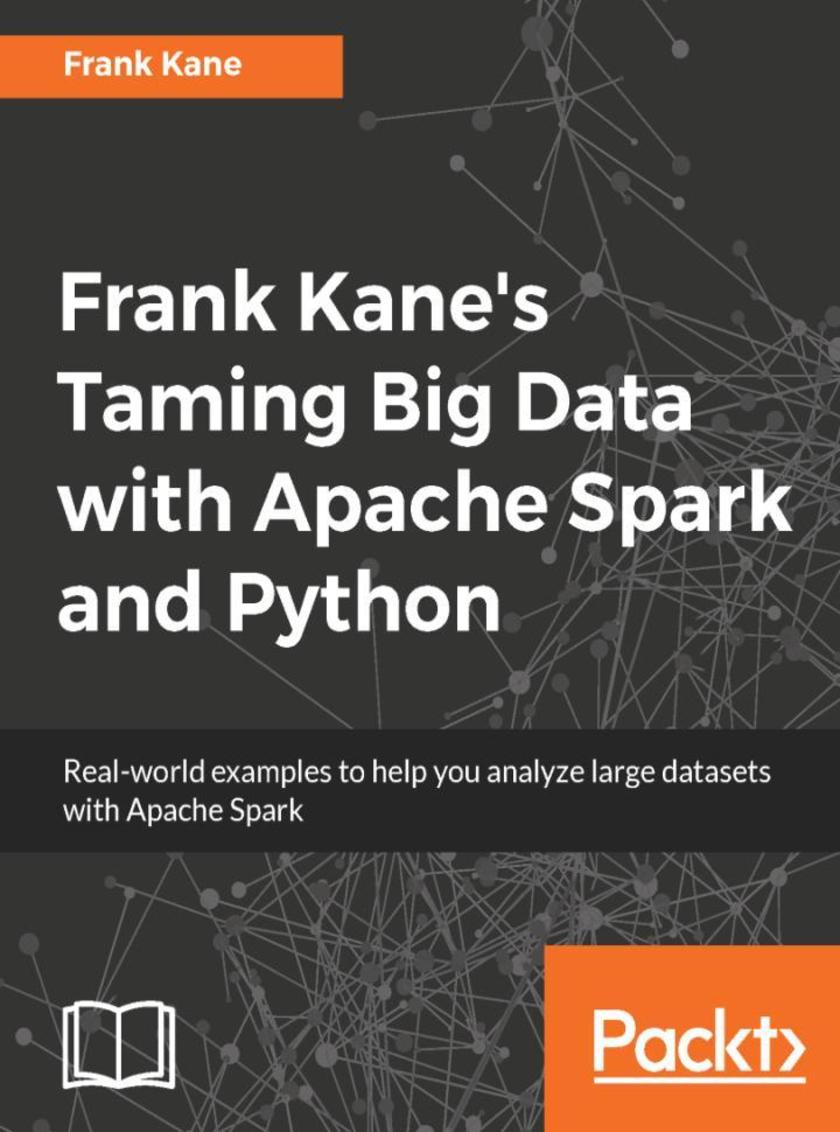
Frank Kane's Taming Big Data with Apache Spark and Python
¥71.93
Frank Kane’s hands-on Spark training course, based on his bestselling Taming Big Data with Apache Spark and Python video, now available in a book. Understand and analyze large data sets using Spark on a single system or on a cluster. About This Book ? Understand how Spark can be distributed across computing clusters ? Develop and run Spark jobs efficiently using Python ? A hands-on tutorial by Frank Kane with over 15 real-world examples teaching you Big Data processing with Spark Who This Book Is For If you are a data scientist or data analyst who wants to learn Big Data processing using Apache Spark and Python, this book is for you. If you have some programming experience in Python, and want to learn how to process large amounts of data using Apache Spark, Frank Kane’s Taming Big Data with Apache Spark and Python will also help you. What You Will Learn ? Find out how you can identify Big Data problems as Spark problems ? Install and run Apache Spark on your computer or on a cluster ? Analyze large data sets across many CPUs using Spark’s Resilient Distributed Datasets ? Implement machine learning on Spark using the MLlib library ? Process continuous streams of data in real time using the Spark streaming module ? Perform complex network analysis using Spark’s GraphX library ? Use Amazon's Elastic MapReduce service to run your Spark jobs on a cluster In Detail Frank Kane’s Taming Big Data with Apache Spark and Python is your companion to learning Apache Spark in a hands-on manner. Frank will start you off by teaching you how to set up Spark on a single system or on a cluster, and you’ll soon move on to analyzing large data sets using Spark RDD, and developing and running effective Spark jobs quickly using Python. Apache Spark has emerged as the next big thing in the Big Data domain – quickly rising from an ascending technology to an established superstar in just a matter of years. Spark allows you to quickly extract actionable insights from large amounts of data, on a real-time basis, making it an essential tool in many modern businesses. Frank has packed this book with over 15 interactive, fun-filled examples relevant to the real world, and he will empower you to understand the Spark ecosystem and implement production-grade real-time Spark projects with ease. Style and approach Frank Kane’s Taming Big Data with Apache Spark and Python is a hands-on tutorial with over 15 real-world examples carefully explained by Frank in a step-by-step manner. The examples vary in complexity, and you can move through them at your own pace.
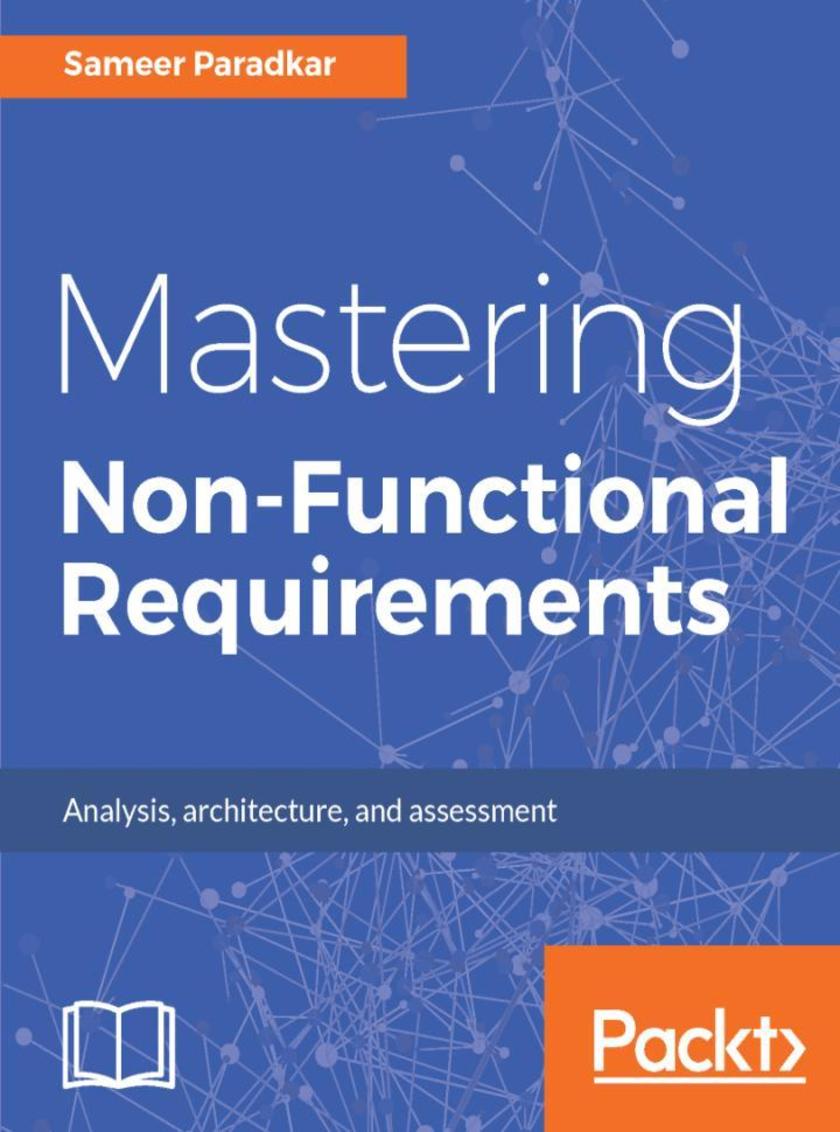
Mastering Non-Functional Requirements
¥71.93
This book covers the most critical 24 NFRs that are applicable to IT applications and systems. About This Book ? Explains three stages of nonfunctional requirements, that is, analysis, architecture, and assessment ? In-depth knowledge of NFR framework and taxonomy that provides guidance around the modelling phase for the NFRs ? Coverage of 24 critical and pivotal NFRs, including the analysis, architecture, and assessment. Who This Book Is For The primary audience for this title are the gamut of roles starting from IT consultant to chief architects who are responsible to deliver strategic, tactical, and operational engagements for fortune 100 customers worldwide. Nonfunctional requirements are the key to any software / IT program. They cannot be overlooked or ignored. The book provides a comprehensive approach from analysis, architecture, and measurement of nonfunctional requirements. The book includes considerations for bespoke (Java, .Net, and COTS applications). These are applicable to IT applications from various domains. The book outlines the methodology for capturing the NFRs and also describes a framework that can be leveraged by analysts and architects for tackling NFRs for various engagements. The audience for this book include business analysts, enterprise architects, business architects, solution architects, technical architects/designers, domain/security/integration architects, software developers, support engineers and test engineers, technical project managers, project leads/technical leads/technical project managers, and students from the computer science/IT stream What You Will Learn ? Learn techniques related to the analysis, architecture, and monitoring of NFRs ? Understand the various tools, techniques, and processes in order to improve the overall quality of the desired outcomes ? Embrace the best practices of architecting, metrics, and success factors for NFRs ? Identify the common pitfalls to be avoided and the patterns to leverage ? Understand taxonomy and framework for NFRs ? Learn the design guidelines for architecting applications and systems relating to NFRs ? Abstract different methodologies to analyze and gather NFRs In Detail Non-functional Requirements are key to any software/IT program and cannot be overlooked or ignored. This book provides a comprehensive approach to the analysis, architecture, and measurement of NFRs. It includes considerations for bespoke Java, .NET, and COTS applications that are applicable to IT applications/systems in different domains. The book outlines the methodology for capturing the NFRs and also describes a framework that can be leveraged by analysts and architects for tackling NFRs for various engagements. This book starts off by explaining the various KPIs, taxonomies, and methods for identifying NFRs. Learn the design guidelines for architecting applications and systems relating to NFRs and design principles to achieve the desired outcome. We will then move on to various key tiers/layers and patterns pertaining to the business, database, and integrating tiers. After this, we will dive deep into the topics pertaining to techniques related to monitoring and measurement of NFRs, such as sizing, analytical modeling, and quality assurance. Lastly, we end the book by describing some pivotal NFRs and checklists for the software quality attributes related to the business, application, data, and infrastructure domains. Style and approach The book takes a pragmatic approach, describing various techniques related to the analysis of NFRs, the architecture of NFRs, and assessment of NFRs.
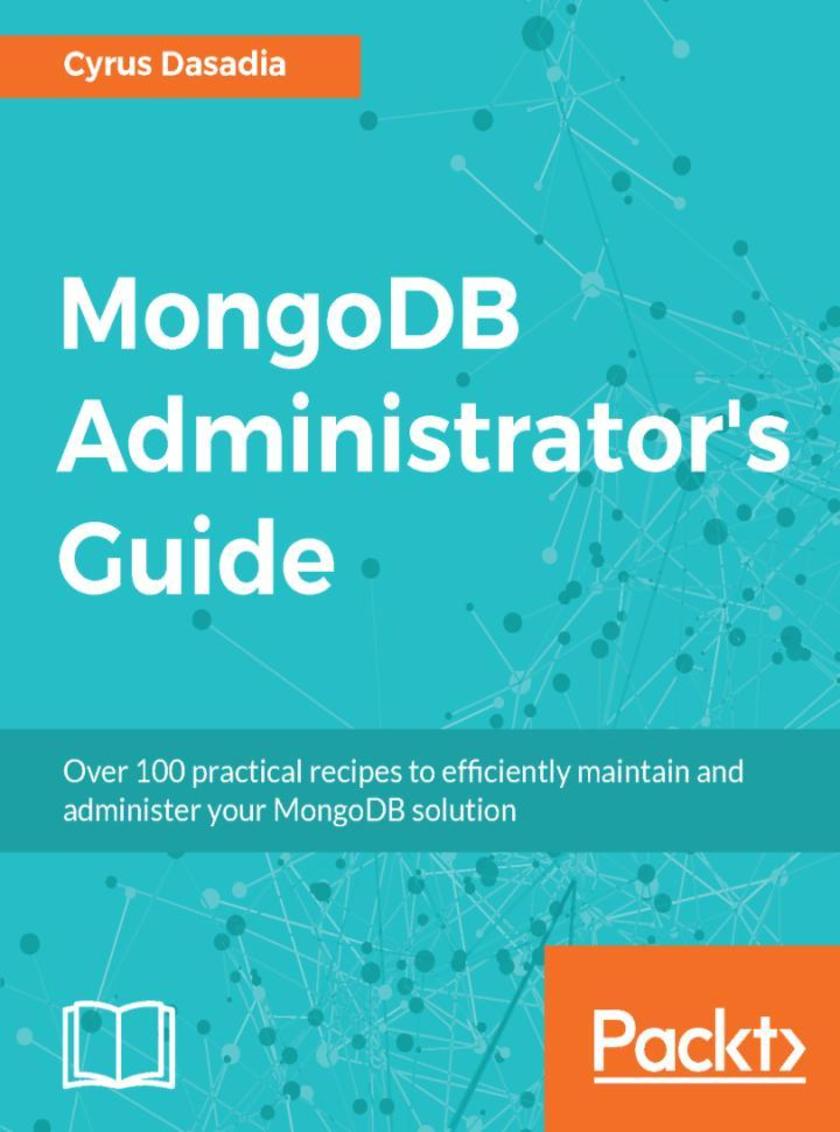
MongoDB Administrator’s Guide
¥71.93
Manage, fine-tune, secure and deploy your MongoDB solution with ease with the help of practical recipes About This Book ? Configure and deploy your MongoDB instance securely, without any hassle ? Optimize your database's query performance, perform scale-out operations, and make your database highly available ? Practical guide with a recipe-based approach to help you tackle any problem in the application and database administration aspects of MongoDB Who This Book Is For Database administrators with a basic understanding of the features of MongoDB and who want to professionally configure, deploy, and administer a MongoDB database, will find this book essential. If you are a MongoDB developer and want to get into MongoDB administration, this book will also help you. What You Will Learn ? Install and deploy MongoDB in production ? Manage and implement optimal indexes ? Optimize monitoring in MongoDB ? Fine-tune the performance of your queries ? Debug and diagnose your database's performance ? Optimize database backups and recovery and ensure high availability ? Make your MongoDB instance scalable ? Implement security and user authentication features in MongoDB ? Master optimal cloud deployment strategies In Detail MongoDB is a high-performance and feature-rich NoSQL database that forms the backbone of the systems that power many different organizations. Packed with many features that have become essential for many different types of software professional and incredibly easy to use, this cookbook contains more than 100 recipes to address the everyday challenges of working with MongoDB. Starting with database configuration, you will understand the indexing aspects of MongoDB. The book also includes practical recipes on how you can optimize your database query performance, perform diagnostics, and query debugging. You will also learn how to implement the core administration tasks required for high-availability and scalability, achieved through replica sets and sharding, respectively. You will also implement server security concepts such as authentication, user management, role-based access models, and TLS configuration. You will also learn how to back up and recover your database efficiently and monitor server performance. By the end of this book, you will have all the information you need—along with tips, tricks, and best practices—to implement a high-performance MongoDB solution. Style and approach This practical book follows a problem-solution approach to help you tackle any issues encountered while performing MongoDB administrative tasks. Each recipe is detailed, and explained in a very easy to understand manner
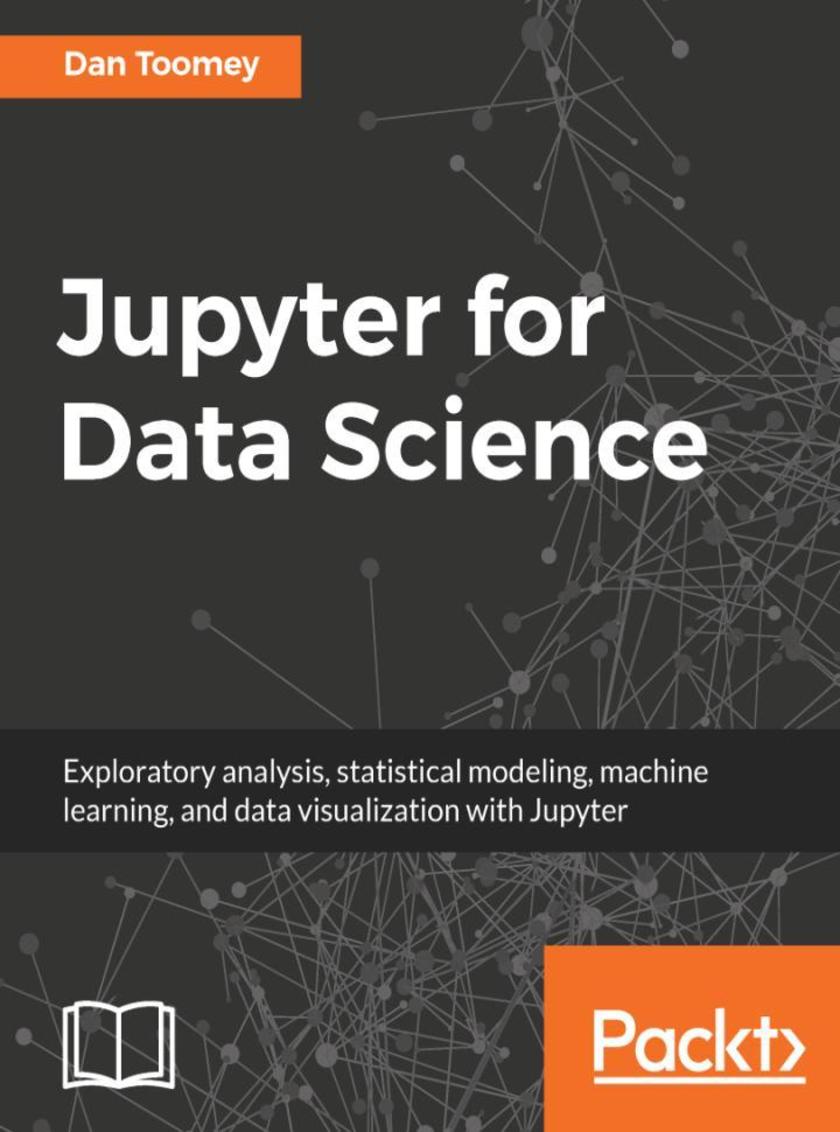
Jupyter for Data Science
¥71.93
Your one-stop guide to building an efficient data science pipeline using Jupyter About This Book ? Get the most out of your Jupyter notebook to complete the trickiest of tasks in Data Science ? Learn all the tasks in the data science pipeline—from data acquisition to visualization—and implement them using Jupyter ? Get ahead of the curve by mastering all the applications of Jupyter for data science with this unique and intuitive guide Who This Book Is For This book targets students and professionals who wish to master the use of Jupyter to perform a variety of data science tasks. Some programming experience with R or Python, and some basic understanding of Jupyter, is all you need to get started with this book. What You Will Learn ? Understand why Jupyter notebooks are a perfect fit for your data science tasks ? Perform scientific computing and data analysis tasks with Jupyter ? Interpret and explore different kinds of data visually with charts, histograms, and more ? Extend SQL's capabilities with Jupyter notebooks ? Combine the power of R and Python 3 with Jupyter to create dynamic notebooks ? Create interactive dashboards and dynamic presentations ? Master the best coding practices and deploy your Jupyter notebooks efficiently In Detail Jupyter Notebook is a web-based environment that enables interactive computing in notebook documents. It allows you to create documents that contain live code, equations, and visualizations. This book is a comprehensive guide to getting started with data science using the popular Jupyter notebook. If you are familiar with Jupyter notebook and want to learn how to use its capabilities to perform various data science tasks, this is the book for you! From data exploration to visualization, this book will take you through every step of the way in implementing an effective data science pipeline using Jupyter. You will also see how you can utilize Jupyter's features to share your documents and codes with your colleagues. The book also explains how Python 3, R, and Julia can be integrated with Jupyter for various data science tasks. By the end of this book, you will comfortably leverage the power of Jupyter to perform various tasks in data science successfully. Style and approach This book is a perfect blend of concepts and practical examples, written in a way that is very easy to understand and implement. It follows a logical flow where you will be able to build on your understanding of the different Jupyter features with every chapter.

Working with Linux – Quick Hacks for the Command Line
¥71.93
Say goodbye to unproductive Linux habits and switch to the express lane About This Book ? Improve your terminal and command-line productivity by using powerful tools ? Sharpen your existing command-line skills and achieve complex tasks faster ? Save time and money by creating customized commands that automate day-to-day tasks Who This Book Is For This book is for system administrators and developers who know the basics of Linux and want to brush up and sharpen their skills. Prior experience with Linux shell is required. What You Will Learn ? Optimize the power of Guake by integrating it with ClipIt ? Deep dive into the workings of the console editor—Vim ? Explore the advanced concepts and best practices of shell *ing ? Edit large amounts of data quickly using Sed ? Use pipes and subshells to create customized commands ? Get to know how you can speed up the software development and make the terminal a handy companion In Detail Websites, online services, databases, and pretty much every other computer that offers public services runs on Linux. From small servers to clusters, Linux is anywhere and everywhere. With such a broad usage, the demand for Linux specialists is ever growing. For the engineers out there, this means being able to develop, interconnect, and maintain Linux environments. This book will help you increase your terminal productivity by using Terminator, Guake and other tools. It will start by installing Ubuntu and will explore tools and techniques that will help you to achieve more work with less effort. Next, it will then focus on Terminator, the ultimate terminal, and vim, one of the most intelligent console editors. Futhermore, the readers will see how they can increase their command line productivity by using sed, find, tmux, network, autoenv. The readers will also see how they can edit files without leaving the terminal and use the screen space efficiently and copy-paste like a pro. Towards the end, we focus on network settings, Git hacks, and creating portable environments for development and production using Docker. Through this book, you will improve your terminal productivity by seeing how to use different tools. Style and Approach This book takes a step-by-step approach using examples that show you how to automate tasks using terminal commands. You’ll work through easy-to-follow instructions so you learn to use the various Linux commands and tools such as Terminator, Guake, and others.
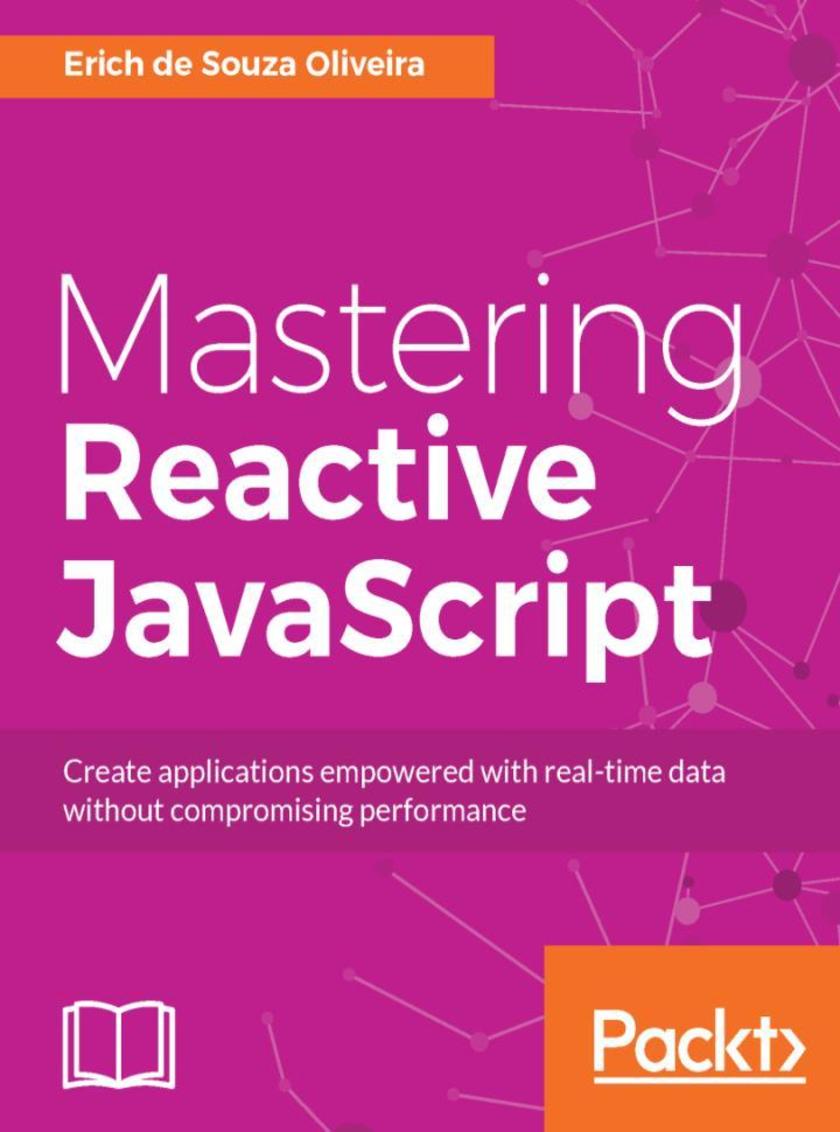
Mastering Reactive JavaScript
¥71.93
Expand your boundaries by creating applications empowered with real-time data using RxJs without compromising performance About This Book ? Handle an infinite stream of incoming data using RxJs without going crazy ? Explore important RxJs operators that can help you improve your code readability ? Get acquainted with the different techniques and operators used to handle data traffic, which occurs when you receive data faster than you can process Who This Book Is For If you're a web developer with some basic JavaScript programming knowledge who wants to implement the reactive programming paradigm with JavaScript, then this book is for you. What You Will Learn ? Get to know the basics of functional reactive programming using RxJs ? Process a continuous flow of data with linear memory consumption ? Filter, group, and react to changes in your system ? Discover how to deal with data traffic ? Compose operators to create new operators and use them in multiple observables to avoid code repetition ? Explore transducers and see how they can improve your code readability ? Detect and recover from errors in observables using Retry and Catch operators ? Create your own reactive application: a real-time webchat In Detail If you’re struggling to handle a large amount of data and don’t know how to improve your code readability, then reactive programming is the right solution for you. It lets you describe how your code behaves when changes happen and makes it easier to deal with real-time data. This book will teach you what reactive programming is, and how you can use it to write better applications. The book starts with the basics of reactive programming, what Reactive Extensions is, and how can you use it in JavaScript along with some reactive code using Bacon. Next, you’ll discover what an Observable and an Observer are and when to use them.You'll also find out how you can query data through operators, and how to use schedulers to react to changes. Moving on, you’ll explore the RxJs API, be introduced to the problem of data traffic (backpressure), and see how you can mitigate it. You’ll also learn about other important operators that can help improve your code readability, and you’ll see how to use transducers to compose operators. At the end of the book, you’ll get hands-on experience of using RxJs, and will create a real-time web chat using RxJs on the client and server, providing you with the complete package to master RxJs. Style and approach This easy-to-follow guide is full of hands-on examples of reactive programming. Each topic is explained and placed in context, and for the more inquisitive there are more details of the concepts used, ending with an application using the concepts learned through the book.
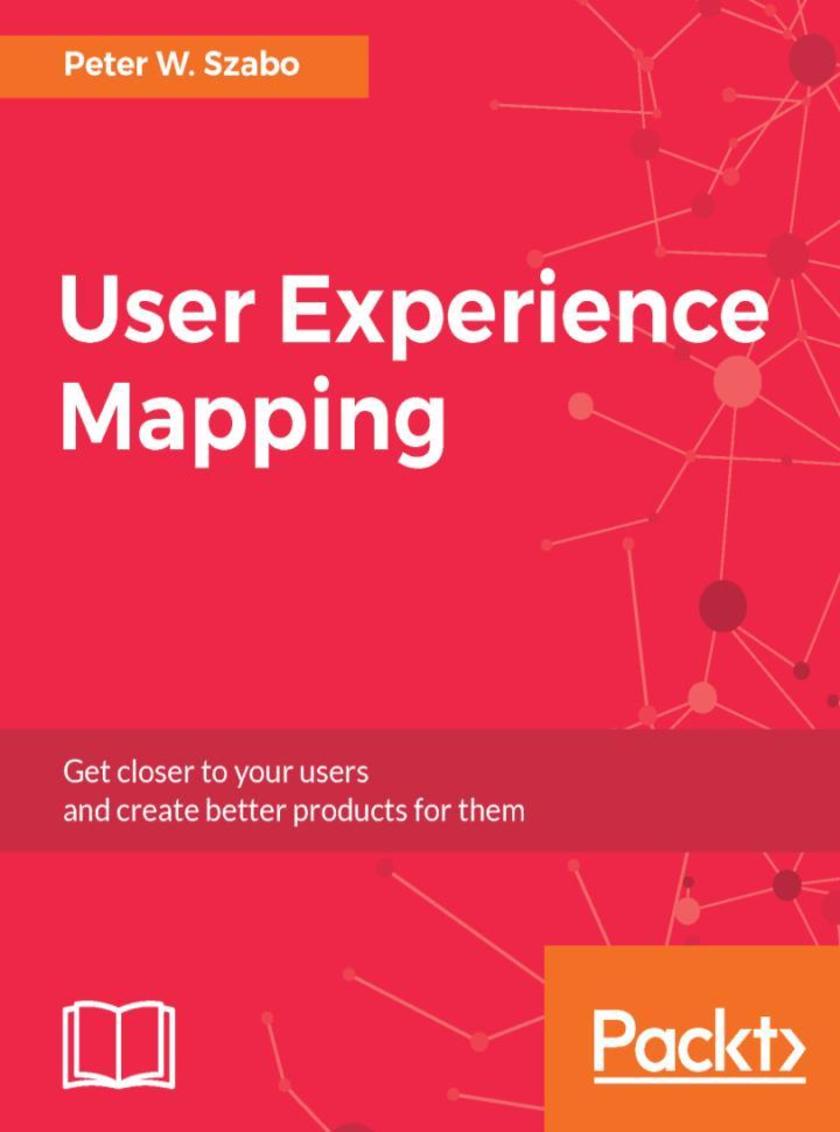
User Experience Mapping
¥71.93
Understand your users, gain strategic insights, and make your product development more efficient with user experience mapping About This Book ? Detailed guidance on the major types of User Experience Maps. ? Learn to gain strategic insights and improve communication with stakeholders . ? Get an idea on creating wireflows, mental model maps, ecosystem maps and solution maps Who This Book Is For This book is for Product Manager, Service Managers and Designers who are keen on learning the user experience mapping techniques. What You Will Learn ? Create and understand all common user experience map types. ? Use lab or remote user research to create maps and understand users better. ? Design behavioral change and represent it visually. ? Create 4D user experience maps, the “ultimate UX deliverable”. ? Capture many levels of interaction in a holistic view. ? Use experience mapping in an agile team, and learn how maps help in communicating within the team and with stakeholders. ? Become more user focused and help your organisation become user-centric. In Detail Do you want to create better products and innovative solutions? User Experience Maps will help you understand users, gain strategic insights and improve communication with stakeholders. Maps can also champion user-centricity within the organisation. Two advanced mapping techniques will be revealed for the first time in print, the behavioural change map and the 4D UX map. You will also explore user story maps, task models and journey maps. You will create wireflows, mental model maps, ecosystem maps and solution maps. In this book, the author will show you how to use insights from real users to create and improve your maps and your product. The book describes each major User Experience map type in detail. Starting with simple techniques based on sticky notes moving to more complex map types. In each chapter, you will solve a real-world problem with a map. The book contains detailed, beginner level tutorials on creating maps using different software products, including Adobe Illustrator, Balsamiq Mockups, Axure RP or Microsoft Word. Even if you don’t have access to any of those, each map type can also be drawn with pen and paper. Beyond creating maps, the book will also showcase communication techniques and workshop ideas. Although the book is not intended to be a comprehensive guide to modern user experience or product management, its novel ideas can help you create better solutions. You will also learn about the Kaizen-UX management framework, developed by the author, now used by many agencies and in-house UX teams in Europe and beyond. Buying this map will give you hundreds of hours worth of user experience knowledge, from one of the world’s leading UX consultants. It will change your users’ world for the better. If you are still not convinced, we have hidden some cat drawings in it, just in case. Style and approach An easy to understand guide, filled with real world use cases on how to plan, prioritize and visualize your project on customer experience
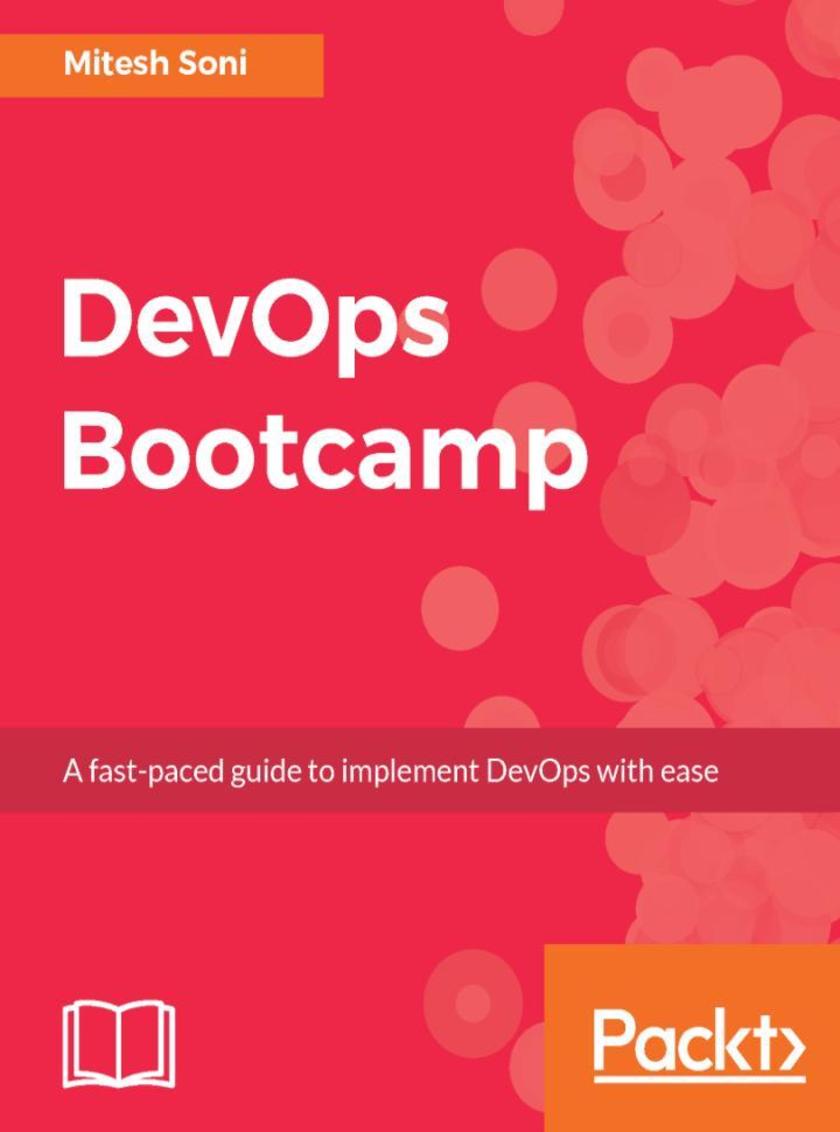
DevOps Bootcamp
¥71.93
Sharpen your DevOps knowledge with DevOps Bootcamp About This Book ? Improve your organization's performance to ensure smooth production of software and services. ? Learn how Continuous Integration and Continuous Delivery practices can be utilized to cultivate the DevOps culture. ? A fast-paced guide filled with illustrations and best practices to help you consistently ship quality software. Who This Book Is For The book is aimed at IT Developers and Operations—administrators who want to quickly learn and implement the DevOps culture in their organization. What You Will Learn ? Static Code Analysis using SOnarqube ? Configure a Maven-based JEE Web Application ? Perform Continuous Integration using Jenkins and VSTS ? Install and configure Docker ? Converge a Chef node using a Chef workstation ? Accomplish Continuous Delivery in Microsoft Azure VM and Microsoft Azure App Services (Azure Web Apps) using Jenkins ? Perform Load Testing using Apache JMeter ? Build and Release Automation using Visual Studio Team Services ? Monitor Cloud-based resources In Detail DevOps Bootcamp delivers practical learning modules in manageable chunks. Each chunk is delivered in a day, and each day is a productive one. Each day builds your competency in DevOps. You will be able to take the task you learn every day and apply it to cultivate the DevOps culture. Each chapter presents core concepts and key takeaways about a topic in DevOps and provides a series of hands-on exercises. You will not only learn the importance of basic concepts or practices of DevOps but also how to use different tools to automate application lifecycle management. We will start off by building the foundation of the DevOps concepts. On day two, we will perform Continuous Integration using Jenkins and VSTS both by configuring Maven-based JEE Web Application?. We will also integrate Jenkins and Sonar qube for Static Code Analysis. Further, on day three, we will focus on Docker containers where we will install and configure Docker and also create a Tomcat Container to deploy our Java based web application. On day four, we will create and configure the environment for application deployment in AWS and Microsoft Azure Cloud for which we will use Infrastructure as a Service and Open Source Configuration Management tool Chef. For day five, our focus would be on Continuous Delivery. We will automate application deployment in Docker container using Jenkins Plugin, AWS EC2 using Script, AWS Elastic Beanstalk using Jenkins Plugin, Microsoft Azure VM using *, and Microsoft Azure App Services Using Jenkins. We will also configure Continuous Delivery using VSTS. We will then learn the concept of Automated Testing on day six using Apache JMeter and URL-based tests in VSTS. Further, on day seven, we will explore various ways to automate application lifecycle management using orchestration. We will see how Pipeline can be created in Jenkins and VSTS, so the moment Continuous? Integration is completed successfully, Continuous Delivery will start and application will be deployed. On the final day, our focus would be on Security access to Jenkins and Monitoring of CI resources, and cloud-based resources in AWS and Microsoft Azure Platform as a Service. Style and Approach This book is all about fast and intensive learning. This means we don’t waste time in helping readers get started. The new content is basically about filling in with highly-effective examples to build new things, solving problems in newer and unseen ways, and solving real-world examples.
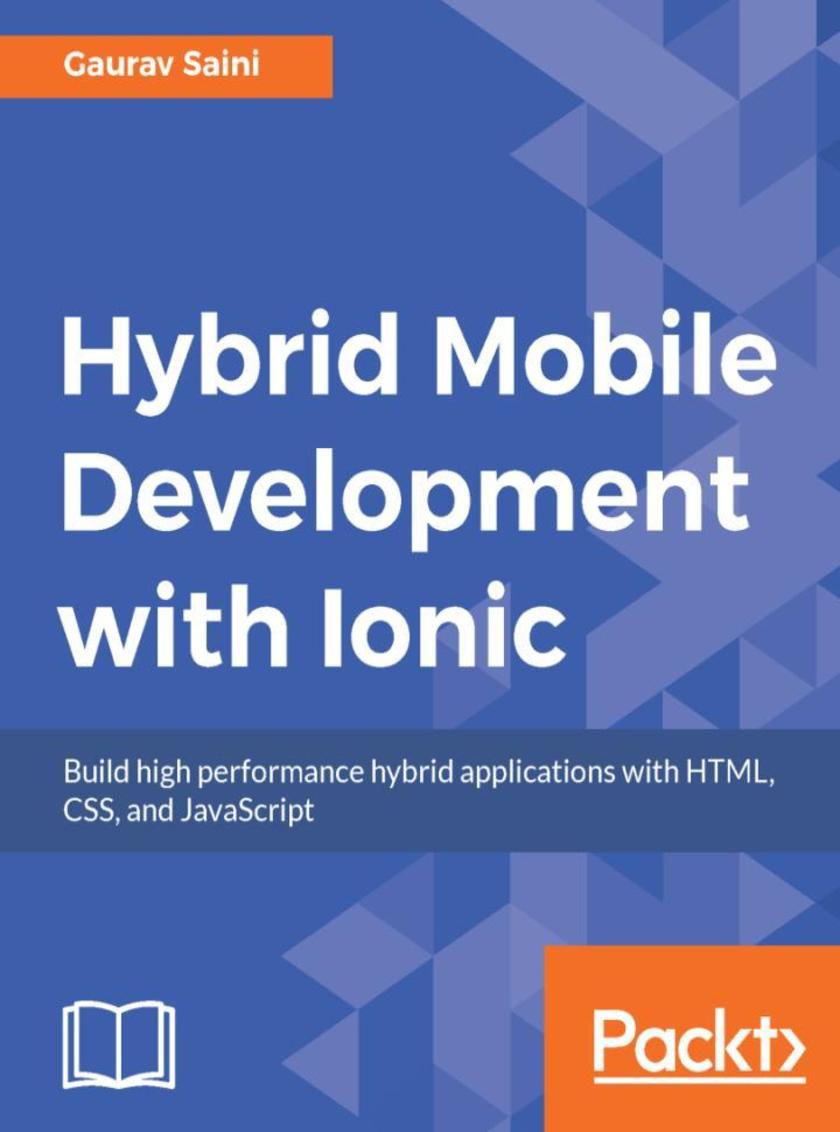
Hybrid Mobile Development with Ionic
¥71.93
Key Features ?Develop high-grade and performance-optimized hybrid applications using Ionic ?Discover all the latest and upcoming features of Ionic 2 ?A practical guide that will help you fully utilize all the features and components of Ionic 2 efficiently Book De*ion Ionic is an open source, front-end framework that allows you to develop hybrid mobile apps without any native-language hassle for each platform. It offers a library of mobile-optimized HTML, CSS, and JS components for building highly interactive mobile apps. This book will help readers develop a complete, professional-quality mobile application with Ionic Framework. You will start the journey by learning to configure and customize Ionic Framework. Then, you will move on to Ionic 2 components and see how you can customize them according to your applications. Also, you will implement various native plugins and integrate them with Ionic 2 along with Ionic Platform services to use them optimally in your application. You will also master authorization, authentication, and security techniques to ensure that your application and data are secure. Further, you will integrate backend services such as Firebase and the Cordova iBeacon plugin in your application. Lastly, you will test and troubleshoot your application. By the end of the book, you will not only have built a professional, hybrid mobile application but will also have ensured that your app is secure and performance-driven. What you will learn ?Use every Ionic component and customize it according to the application. ?Implement offline functionality in your application with various storage options such as localstorage and SQLite. ?Integrate the various Ionic backend services and features such as Ionic push and Ionic playground to send push notification and track events in your application. ?Explore white-listing, CORS, and various other platform security aspects to secure your application. ?Sync your data to the cloud server and fetch it in real time. ?Integrate the Cordova iBeacon plugin and fetch contextual data on the basis of location and iBeacon's UUID
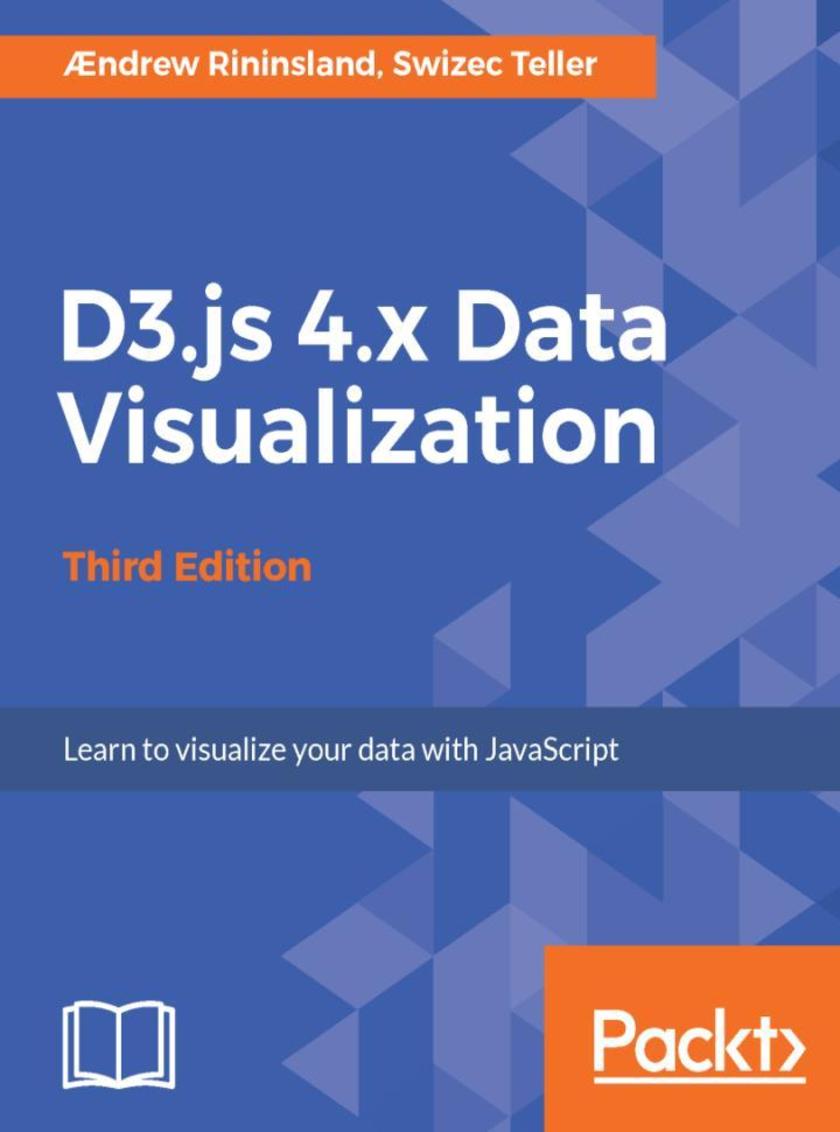
D3.js 4.x Data Visualization - Third Edition
¥71.93
Create and publish your own interactive and compelling data visualizations with D3.js 4.x About This Book ?Build interactive and rich graphics and visualization using JavaScript`s powerful library D3.js ?Learn D3 from the ground up, using the all-new version 4 of the library ?Gain insight into producing high-quality, extensible charts and visualizations using best practices such as writing testable, extensible code and strong typing Who This Book Is For This book is for web developers, interactive news developers, data scientists, and anyone interested in representing data through interactive visualizations on the Web with D3. Some basic knowledge of JavaScript is expected, but no prior experience with data visualization or D3 is required to follow this book. What You Will Learn ?Map data to visual elements using D3's scales ?Draw SVG elements using D3's shape generators ?Transform data using D3's collection methods ?Use D3's various layout patterns to quickly generate various common types of chart ?Write modern JavaScript using ES2017 and Babel ?Explore the basics of unit testing D3 visualizations using Mocha and Chai ?Write and deploy a simple Node.js web service to render charts via HTML Canvas ?Understand what makes a good data visualization and how to use the tools at your disposal to create accurate charts In Detail Want to get started with impressive interactive visualizations and implement them in your daily tasks? This book offers the perfect solution-D3.js. It has emerged as the most popular tool for data visualization.

The Node Craftsman Book
¥71.93
The Node Craftsman Book helps JavaScript programmers with basic Node.js knowledge to now thoroughly master Node.js and JavaScript. This book dives you deeper into the craft of software development with Node.js and JavaScript, incuding object-orientation, test-driven development, database handling, web frameworks, and much more. The Node Craftsman Book shows you how to work with Node.js and how to think deeply about how you build your Node projects. You'll master how to build a complete Node.js application across six crafting milestones, and you'll learn many specific skills to achieve that mastery. These skills include how to work with the Node Package Manager in depth, how to connect your Node applications to databases, and how to write unit tests and end-to-end tests for your code. You'll experience the full Node.js development picture, and learn how to craft and control your Node.js applications - right through to fully-fledged web applications using REST, and integration with Angular applications. What you will learn ?How to connect to databases like MongoDB and MySQL from your Node.js application ?How to unit tests and end-to-end tests for your code ?When and how to leverage migrations for setting up a continuous deployment workflow ?Detailed insight into how the Node Package Manager, NPM works ?How object-orientation actually works
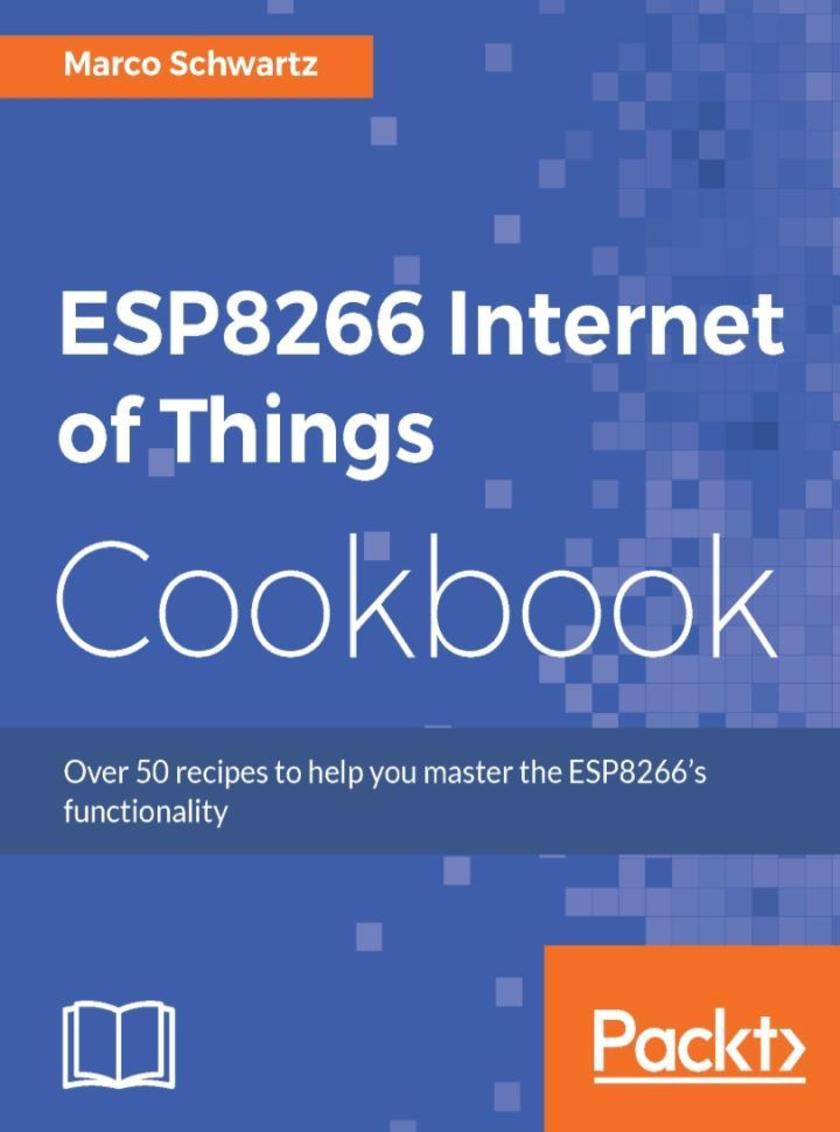
ESP8266 Internet of Things Cookbook
¥71.93
The ESP8266 Wi-Fi Module is a self contained System on Chip (SOC) with an integrated TCP/IP protocol stack and can give any microcontroller access to your Wi-fi network. It is capable of either hosting an application or offloading all Wi-fi networking functions from another application processor. This book contains practical recipes that will help you master all ESP8266 functionalities. You will start by configuring and customizing the chip in line with your requirements. Then you will focus on core topics such as on-board processing, sensors, GPIOs, programming, networking, integration with external components, and so on. We will also teach you how to leverage Arduino using the ESP8266 and you'll learn about its libraries, file system, OTA updates, and so on. The book also provide recipes on web servers, testing, connecting with the cloud, and troubleshooting techniques. Programming aspects include MicroPython and how to leverage it to get started with the ESP8266. Towards the end, we will use these concepts and create an interesting project (IOT). By the end of the book, readers will be proficient enough to use the ESP8266 board efficiently.
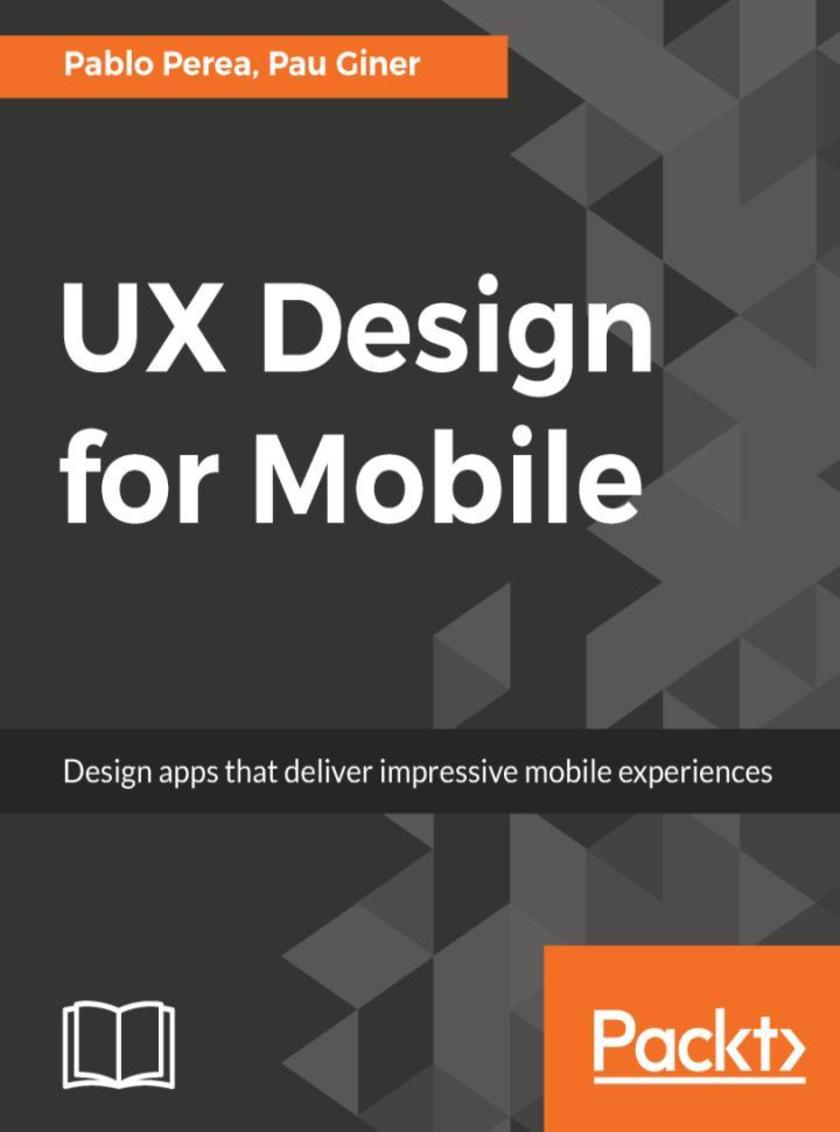
UX Design for Mobile
¥71.93
Get proficient in building beautiful and appealing mobile interfaces (UI) with this complete mobile user experience (UX) design guide. About This Book ? Quickly explore innovative design solutions based on the real needs of your users. ? Create low and high fidelity prototypes using some of the best tools. ? Master a pragmatic design process to create successful products. ? Plan an app design from scratch to final test, with real users. Who This Book Is For This book is for designers, developers and product managers interested in creating successful apps. Readers will be provided with a process to produce, test and improve designs based on best practices. What You Will Learn ? Plan an app design from scratch to final test, with real users. ? Learn from leading companies and find working patterns. ? Apply best UX design practices to your design process. ? Create low and high fidelity prototypes using some of the best tools. ? Follow a step by step examples for Tumult Hype and Framer Studio. ? Test your designs with real users, early in the process. ? Integrate the UX Designer profile into a working team. In Detail User experience (UX) design provides techniques to analyze the real needs of your users and respond to them with products that are delightful to use. This requires you to think differently compared to traditional development processes, but also to act differently. In this book, you will be introduced to a pragmatic approach to exploring and creating mobile app solutions, reducing risks and saving time during their construction. This book will show you a working process to quickly iterate product ideas with low and high fidelity prototypes, based on professional tools from different software brands. You will be able to quickly test your ideas early in the process with the most adequate prototyping approach. You will understand the pros and cons of each approach, when you should use each of them, and what you can learn in each step of the testing process. You will also explore basic testing approaches and some more advanced techniques to connect and learn from your users. Each chapter will focus on one of the general steps needed to design a successful product according to the organization goals and the user needs. To achieve this, the book will provide detailed hands-on pragmatic techniques to design innovative and easy to use products. You will learn how to test your ideas in the early steps of the design process, picking up the best ideas that truly work with your users, rethinking those that need further refinement, and discarding those that don’t work properly in tests made with real users. By the end of the book, you will learn how to start exploring and testing your design ideas, regardless the size of the design budget. Style and approach A quick and simple guide to design and test a mobile application from the UX design point of view
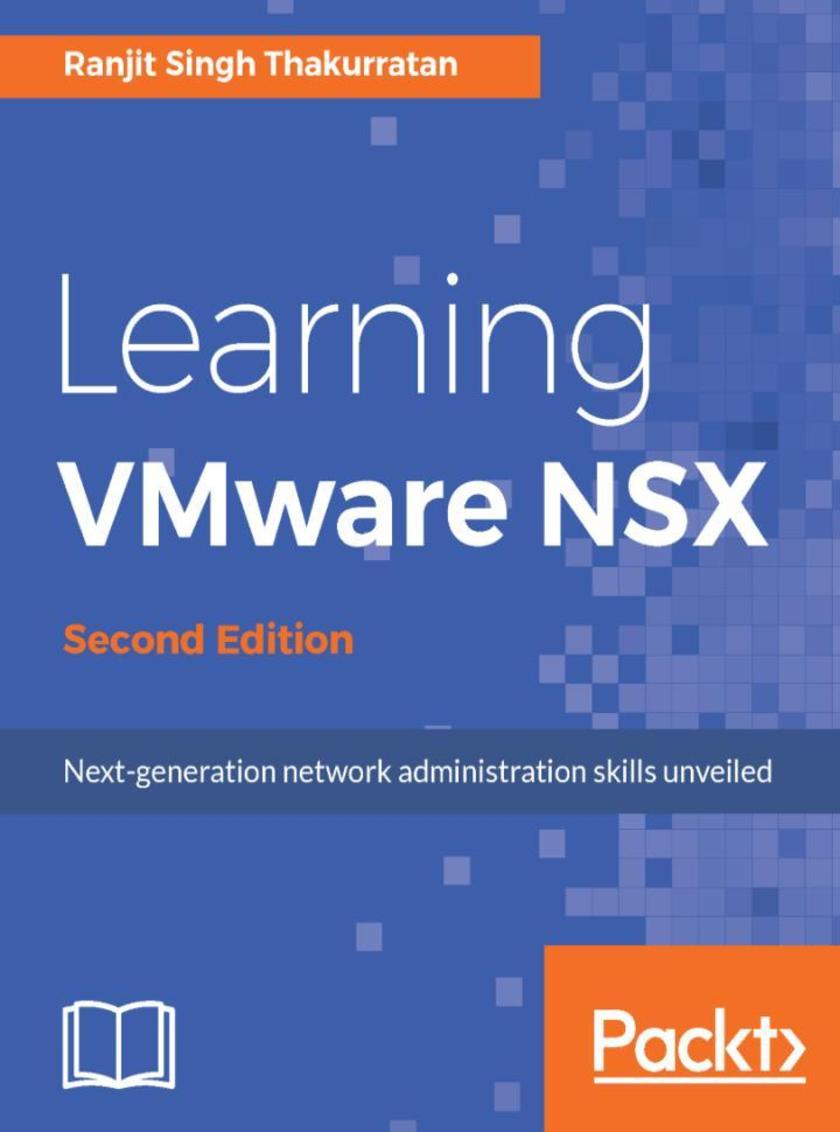
Learning VMware NSX - Second Edition
¥71.93
Explore the foundational components of VMware NSX About This Book ? Install, manage, monitor and configure your NSX deployment. ? Understand VMware NSX's components and discover best practices to help you manage VMware NSX ? A step by step guide that will help you elevate your skills in deploying NSX to your environment Who This Book Is For The book is intended for network and system administrators that have hands on experience with VMware vSphere suite of products and would like to learn more about software defined networking and implementation of NSX. The readers are also expected to have basic networking knowledge and aware of basic switching and routing fundamentals. What You Will Learn ? Understand software-defined networks ? Deploy and configure VXLAN-enabled logical switches ? Secure your environment using Distributed Firewall and Data Security ? Configure third-party services in NSX ? Manage, configure, and deploy edge gateway services ? Perform various Edge operations including configuring CA certificates ? Explore the different monitoring options to check their traffic flow In Detail VMware NSX is a platform for the software-defined data center. It allows complex networking topologies to be deployed programmatically in seconds. SDNs allow ease of deployment, management, and automation in deploying and maintaining new networks while reducing and in some cases completely eliminating the need to deploy traditional networks. The book allows you a thorough understanding of implementing Software defined networks using VMware’s NSX. You will come across the best practices for installing and configuring NSX to setup your environment. Then you will get a brief overview of the NSX Core Components NSX’s basic architecture. Once you are familiar with everything, you will get to know how to deploy various NSX features. Furthermore, you will understand how to manage and monitor NSX and its associated services and features. In addition to this, you will also explore the best practices for NSX deployments. By the end of the book, you will be able to deploy Vmware NSX in your own environment with ease. This book can come handy if you are preparing for VMware NSX certification. Style and approach This is an easy-to-follow guide with tested configuration steps to get you up and running quickly. This book covers the nitty-gritty of installing, configuring, managing, and monitoring VMware NSX.
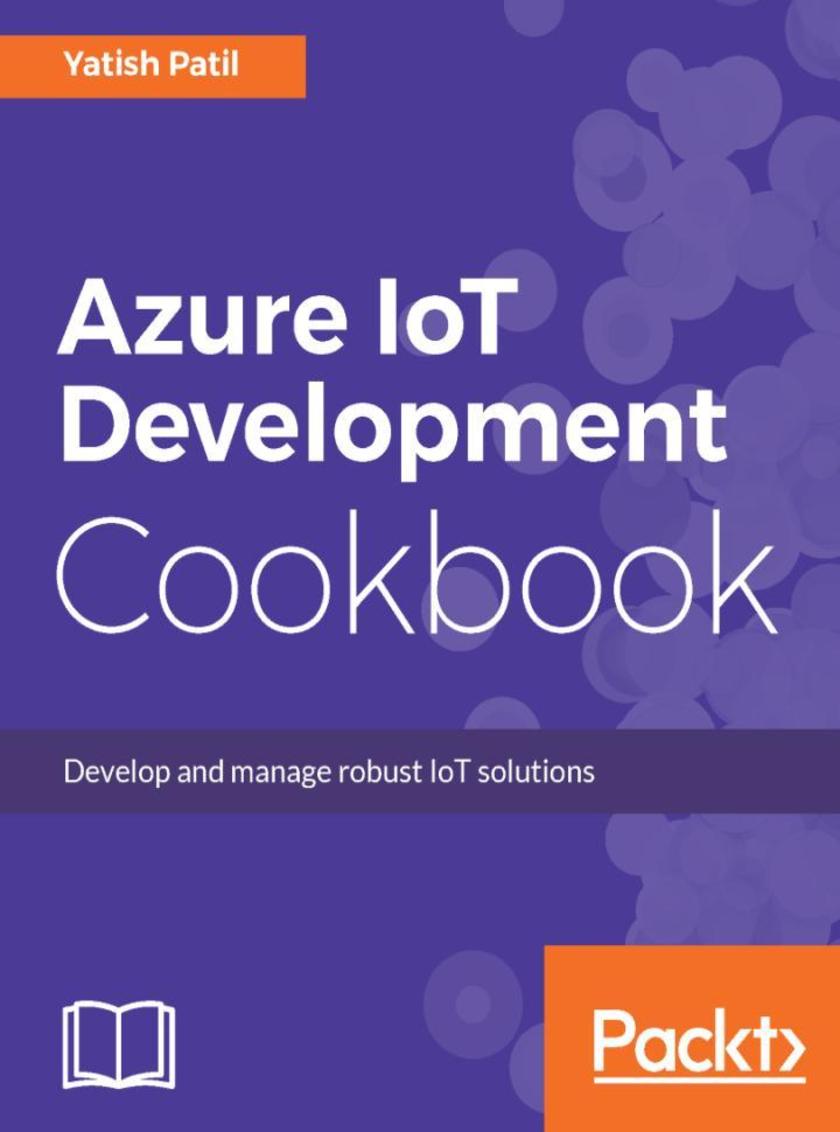
Azure IoT Development Cookbook
¥71.93
Over 50 recipes to drive IoT innovation with Microsoft Azure About This Book ? Build secure and scalable IoT solutions with Azure IoT platform ? Learn techniques to build end to end IoT solutions leveraging the Azure IoT platform ? Filled with practical recipes to help you increase connectivity and automation across IoT devices Who This Book Is For If you are an application developer and want to build robust and secure IoT solution for your organization using Azure IoT, then this book is for you. What You Will Learn ? Build IoT Solutions using Azure IoT & Services ? Learn device configuration and communication protocols ? Understand IoT Suite and Pre-configured solutions ? Manage Secure Device communications ? Understand Device management, alerts ? Introduction with IoT Analytics, reference IoT Architectures ? Reference Architectures from Industry ? Pre-Configured IoT Suite solutions In Detail Microsoft’s end-to-end IoT platform is the most complete IoT offering, empowering enterprises to build and realize value from IoT solutions efficiently. It is important to develop robust and reliable solutions for your organization to leverage IoT services. This book focuses on how to start building custom solutions using the IoT hub or the preconfigured solution of Azure IoT suite. As a developer, you will be taught how to connect multiple devices to the Azure IoT hub, develop, manage the IoT hub service and integrate the hub with cloud. We will be covering REST APIs along with HTTP, MQTT and AMQP protocols. It also helps you learn Pre-Configured IoT Suite solution. Moving ahead we will be covering topics like:-Process device-to-cloud messages and cloud-to-device messages using .Net-Direct methods and device management-Query Language, Azure IoT SDK for .Net-Creating and managing, Securing IoT hub, IoT Suite and many more. We will be using windows 10 IoT core, Visual Studio, universal Windows platform. At the end, we will take you through IoT analytics and provide a demo of connecting real device with Azure IoT. Style and approach A set of exciting recipes of using Microsoft Azure IoT more effectively.
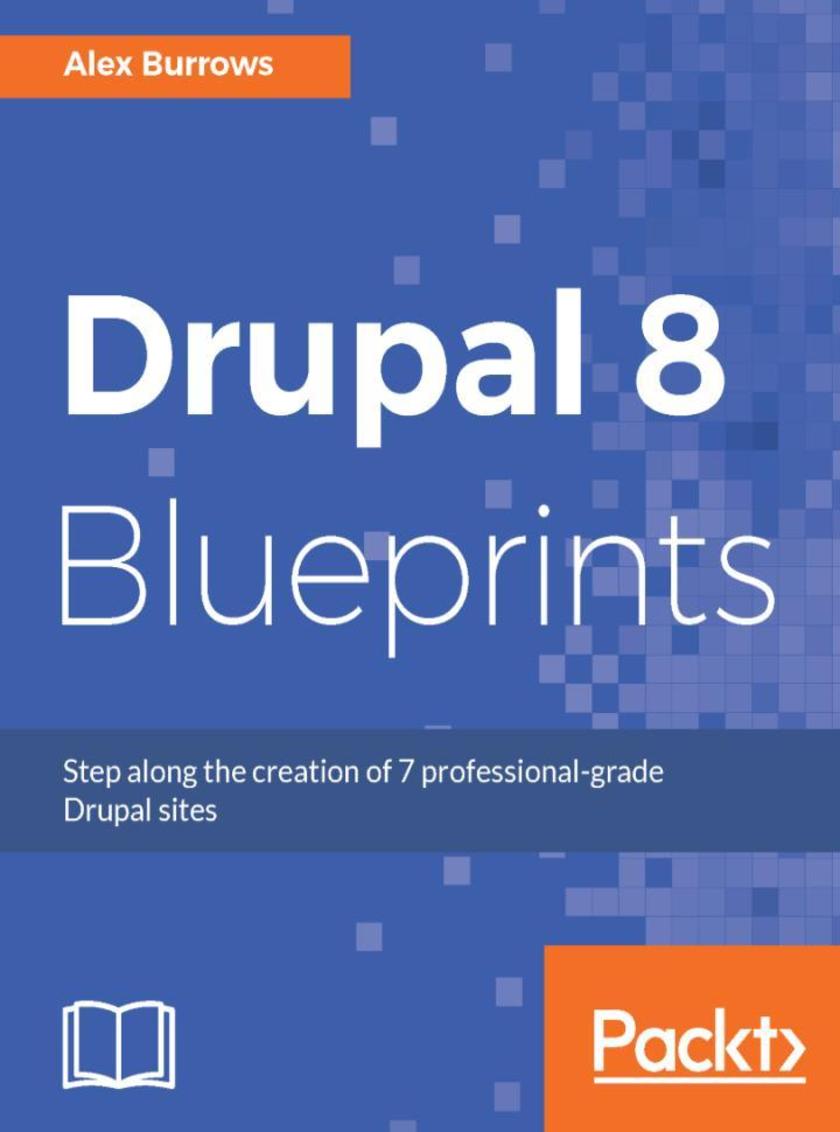
Drupal 8 Blueprints
¥71.93
A project-based guide that will show you how to create 7 professional Drupal sites About This Book ? Create and design your own customized website effortlessly and efficiently ? This up-to-date guide on Drupal 8 will show you how you can leverage the latest Drupal 8 features ? This hands-on guide will turn you into a professional grade Drupal 8 developer through 7 unique and engaging web sites Who This Book Is For This book is ideal for web developers who are looking to create professional web applications using Drupal 8. You should have some previous experience with Drupal and must have a basic knowledge of web application development in general. If you are looking to create fluent professional websites that will take you to the next level, then this book is for you. What You Will Learn ? Find out how to use the Drupal 8 core functionality to build great websites ? Discover how to better manage content using custom blocks and views ? Display content in multiple ways, taking advantage of display modes ? Using the new TWIG theme engine for Drupal ? Easily manage and filter content ? Understanding best practices for building great Drupal sites ? Move beyond Drupal to build headless websites using RESTful services and JavaScript frameworks In Detail Drupal is an open source content management framework that can be used for developing websites and simplifying online management of content for users. This book is a must-have for web developers who are looking to create professional-grade websites using Drupal 8. While building 7 different Drupal websites, we will focus on implementing the out of the box features that come with Drupal 8 and see how we can make some complex sites with minimal custom code. Focusing completely on Drupal 8, this book will help you leverage the new Drupal 8 features such as creating a different types and layouts of content using configuration to build in core with its built-in web services facilities, and effortless authoring using the new CKEditor with an effortless and efficient industry standard approach. The book starts with getting started with the development environment of Drupal. Each chapter will start with a brief overview of the site to be built and the required features. Then, we will proceed to create customized modules and themes and integrate third-party plugins. Lastly, you will learn about "headless" Drupal that uses RESTful services that would help you to display content outside of Drupal By the end of the book, you will be able to implement the knowledge gained to build your own custom websites using Drupal 8. Style and approach This unique, project-based resource on Drupal 8 website development will show you how to leverage Drupal 8’s features to create customized, professional-grade applications efficiently and effectively.
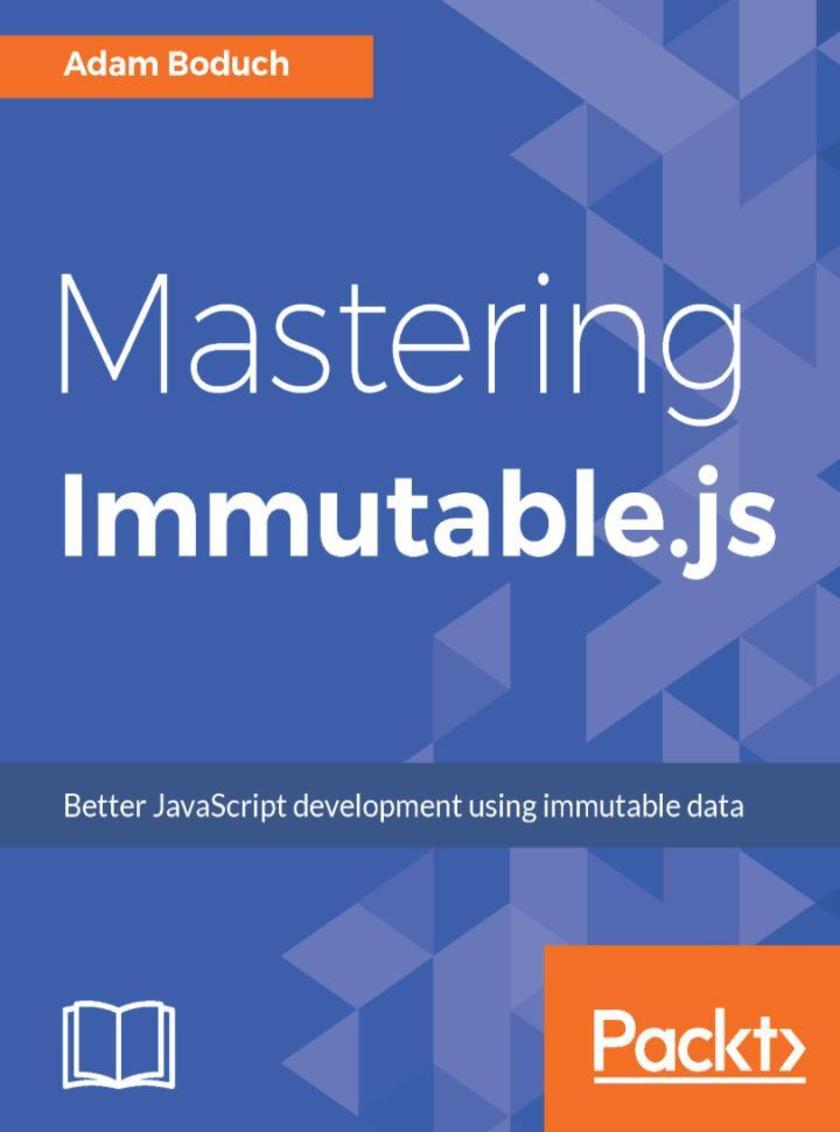
Mastering Immutable.js
¥71.93
This book shows JavaScript developers how to build highly dependable JavaScript projects using the Immutable.js framework. About This Book ? Master the Immutable.js JavaScript framework ? Build predictable and dependable applications using immutability ? Control how data flows through your application ? Control the effects of data flow in your user interface using Node.js Who This Book Is For This book is for JavaScript developers, from intermediate level and beyond, who need to create dependable JavaScript projects, using the Immutable.js JavaScript framework. What You Will Learn ? Learn how Immutable.js can improve the dependability of your JavaScript code ? Discover how to create Immutable data, and work with persistent changes ? See how to combine and filter collections, and find items ? Learn how to work with sequences and side effects ? Sort collections, maps, and sets ? Get to know tricks to avoid processing chains ? Compare and move between lists, sets, and maps ? Work with Immutable patterns and Immutable architecture In Detail Immutable.js is a JavaScript library that will improve the robustness and dependability of your larger JavaScript projects. All aspects of the Immutable.js framework are covered in this book, and common JavaScript situations are examined in a hands-on way so that you gain practical experience using Immutable.js that you can apply across your own JavaScript projects. The key to building robust JavaScript applications using immutability is to control how data flows through your application, and how the side-effects of these flows are managed. Many problems that are difficult to pinpoint in large codebases stem from data that’s been mutated where it shouldn’t have been. With immutable data, you rule out an entire class of bugs. Mastering Immutable.js takes a practical, hands-on approach throughout, and shows you the ins and outs of the Immutable.js framework so that you can confidently build successful and dependable JavaScript projects. Style and Approach Adam Boduch covers all the key concepts and benefits of immutability, and then presents you with hands-on practical experience on implementing immutability in your JavaScript projects.
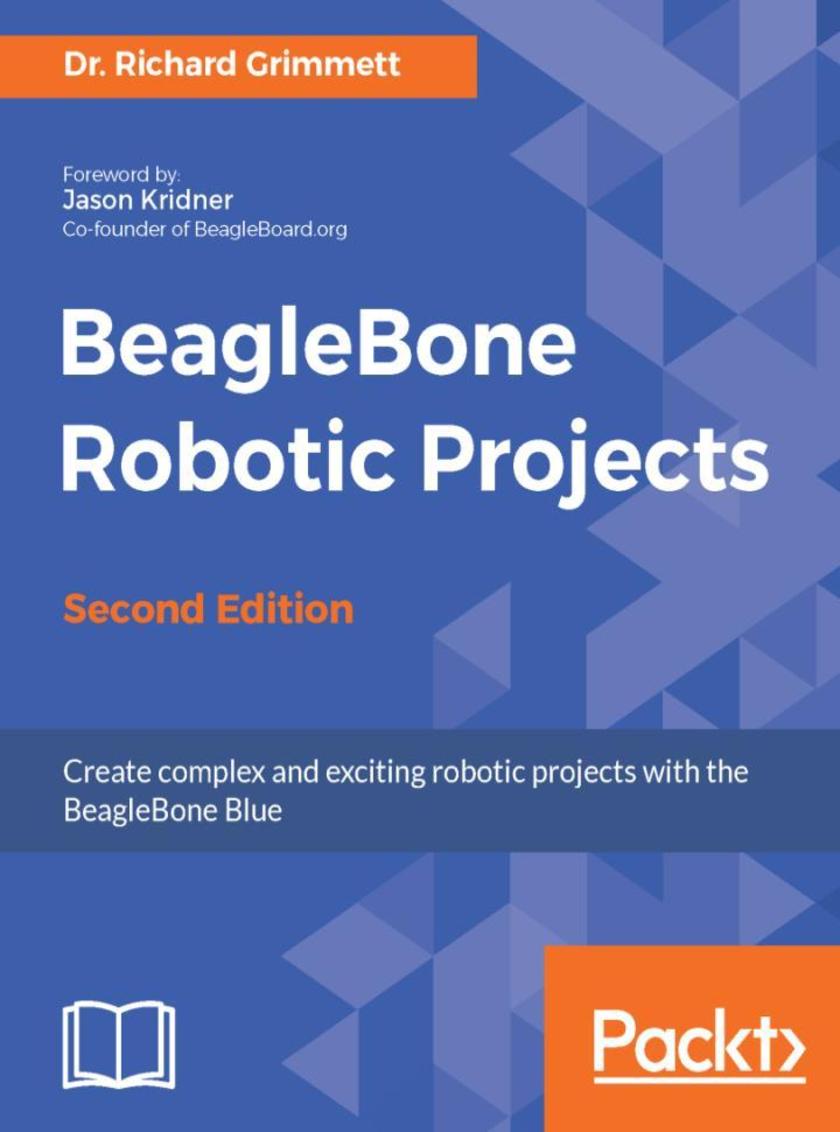
BeagleBone Robotic Projects - Second Edition
¥71.93
Exciting new capabilities to enable even easier DIY robotics with BeagleBone Blue About This Book ? Build powerful robots with the all new BeagleBone Blue ? Communicate with your robot and teach it to detect and respond to its environment ? Control walking, rolling, swimming, and flying robots with your iOS and Android mobile devices Who This Book Is For This book is for anyone who is curious about using new, low-cost hardware to create robotic projects and have previously been the domain of research labs, major universities, or defence departments. Some programming experience would be useful, but if you know how to use a personal computer, you can use this book to construct far more complex systems than you would have thought possible. What You Will Learn ? Power on and configure the BeagleBone Blue ? Get to know Simple programming techniques to enable the unique hardware capabilities of the BeagleBone Blue. ? Connect standard hardware to enable your projects to see, speak, hear, and move ? Build advanced capabilities into your projects, such as GPS and sonar sensors ? Build complex projects that can fly, or go under or on the water In Detail BeagleBone Blue is effectively a small, light, cheap computer in a similar vein to Raspberry Pi and Arduino. It has all of the extensibility of today’s desktop machines, but without the bulk, expense, or noise. This project guide provides step-by-step instructions that enable anyone to use this new, low-cost platform in some fascinating robotics projects. By the time you are finished, your projects will be able to see, speak, listen, detect their surroundings, and move in a variety of amazing ways. The book begins with unpacking and powering up the components. This includes guidance on what to purchase and how to connect it all successfully, and a primer on programming the BeagleBone Blue. You will add additional software functionality available from the open source community, including making the system see using a webcam, hear using a microphone, and speak using a speaker. You will then learn to use the new hardware capability of the BeagleBone Blue to make your robots move, as well as discover how to add sonar sensors to avoid or find objects. Later, you will learn to remotely control your robot through iOS and Android devices. At the end of this book, you will see how to integrate all of these functionalities to work together, before developing the most impressive robotics projects: Drone and Submarine. Style and approach Develop practical example projects with detailed explanations, combine the projects in a vast number of ways to create different robot designs, or work through them in sequence to discover the full capability of the BeagleBone Blue.

Implementing Modern DevOps
¥71.93
Help your organization join the DevOps revolution About This Book ? Helps you skill up your DevOps knowledge without a strong set of prerequisites ? Deliver continuously improved software by showcasing the most advanced tools and techniques ? Acquire a deeper insight into implementing DevOps in your organization and deliver results from day 1 Who This Book Is For This book is written for engineers and companies that want to learn the minimum set of required technologies and processes to be successful in the DevOps world. This book also targets system administrators, developers, and IT professionals who would like to employ DevOps techniques and best practices to manage IT infrastructures or would like to acquire the necessary skills needed to work in DevOps teams. What You Will Learn ? Master development best practices. ? Understand how the Agile Delivery Methodology helps you ensure accuracy and quality. ? Analyze branching strategies such as branch creation, merging, and synchronization. ? Learn to automate builds to deploy and deliver code faster and more often ? Explore testing frameworks and how to automate testing ? Learn to put specific metrics in place to measure ROI of DevOps and monitor logs and events in a system In Detail This book follows a unique approach to modern DevOps using cutting-edge tools and technologies such as Ansible, Kubernetes, and Google Cloud Platform. This book starts by explaining the organizational alignment that has to happen in every company that wants to implement DevOps in order to be effective, and the use of cloud datacenters in combination with the most advanced DevOps tools to get the best out of a small team of skilled engineers. It also delves into how to use Kubernetes to run your applications in Google Cloud Platform, minimizing the friction and hassle of maintaining a cluster but ensuring its high availability. By the end of this book, you will be able to realign teams in your company and create a Continuous Delivery pipeline with Kubernetes and Docker. With strong monitoring in place, you will also be able to react to adverse events in your system, minimizing downtime and improving the overall up-time and stability of your system. Style and approach This book takes a step-by-step practical approach to the implementation of DevOps. This book will teach you how to enable IT organizations to deliver faster and smarter through a unique approach using Code-Build-Test-Release-Configure-Monitor (CBTRCM).




 购物车
购物车 个人中心
个人中心



